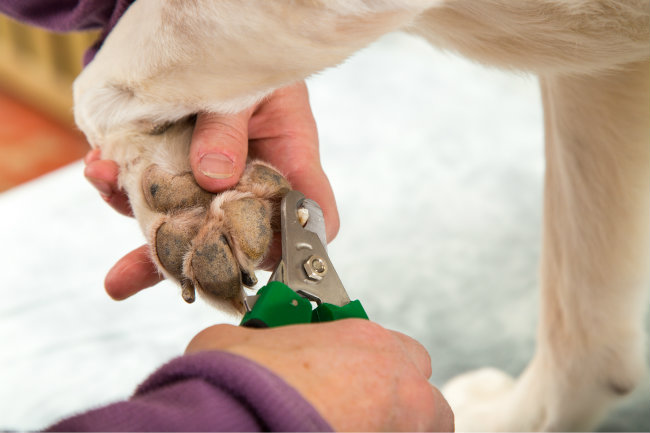
This post may contain affiliate links. We are compensated for referring customers to our affiliate partners.
If you’ve ever seen your dog roll around in the dust, worry a section of matted fur or lick parts of his body, you should know that these aren’t aimless exercises. Your pet is simply grooming himself and keeping pests away. These are about the extent of your dog’s tricks in this area, though. If you love the idea of a completely clean, healthy and happy dog, you’ll need to lend him a hand.
Dog grooming requires far more thorough care than you probably realize
Dog owners have traditionally groomed their pets themselves; they often find it hard to find time for much that their pets need, though. Coat-brushing sessions tend to be short, baths tend to be infrequent, and proper care of the teeth, ears, eyes and glands is put off indefinitely.
Mistakes are often made, too. You can overlook ticks, ringworms and other parasites when you brush your dog’s coat, for instance. It’s easy to forget to clean off loose hair before you bathe your dog, and end up giving him a matted coat. Brushing sessions often completely leave out facial fur — something that causes poor fur growth.
How often do you need to make an appointment?
Unless you are completely committed to learning great skills yourself, dog grooming is a job for a professional. Considering that these services can be expensive, though, you’re bound to wonder how often you should make an appointment.
The answer can depend on the health needs of family members. If people at home tend to be allergic to pet hair, thorough brushings twice a week and baths once a week can help keep shedding to a minimum.
A lot also depends on the health needs of each specific breed
Many animal health websites publish lists of the grooming needs of popular breeds. If you want a low-maintenance pet, consulting one of these lists can be an excellent starting point. Breeds such as the German shepherd, golden retriever, poodle, Havanese, shih-tzu and Labrador retriever tend to need grooming care as often as once a month. Akitas, American Eskimos and Great Pyrenees need far less care. They can go as long as 3 months between grooming appointments.
What determines how often your dog needs an appointment?
Some breeds of dog tend to have oily skin. Their skin and coat tend to quickly collect plenty of dirt as a result. Too much skin oil can also lead to skin infections and breakouts. These dogs need frequent baths.
A tendency to shed is another factor. Akitas, Alaskan malamutes, American Eskimos and Welsh corgis are among the breeds that known to be prodigious shedders. They need to be frequently brushed and bathed. If you neglect to take enough care, you’ll have major matting problems to deal with on your hands.
Less common needs that you need to take care of
Anal glands: All predatory mammals, dogs included, have scent-producing glands near the anus. Secretions from these glands help each dog leave an individual scent behind with each bowel movement. The scent helps dogs identify themselves to other dogs. Unfortunately, poor diet, among other reasons, can lead to blocked scent glands, which is a painful condition.
Certain breeds tend to be predisposed to anal gland problems, too. Chihuahuas, Lhasa apsos, poodles, basset hounds, spaniels and other small breeds tend to frequently need gland care. If you find that your dog often worries his behind, you’ll need to make an appointment with a groomer.
Whisker care: Heavy shedders often grow a great deal of facial fur that can become matted without frequent brushing. For a small number of dogs, their whiskers may need to be trimmed as part of the process.
Nail care: Two things determine how often a dog needs his nails clipped: exercise frequency and breed. The more your dog gets to run around, the more natural wear his nails will get. With little exercise, your dog’s nails will soon grow excessively, and click on the floors that he walks on. When this happens, he will need a grooming visit.
If you put off a visit, your dog may soon have trouble planting his paws properly with each step. He could be at risk of joint problems before long.
Oral care: Many professional grooming services tend to have vets on board for pet dental care. One in three dogs suffer from periodontal disease. In general, short-snouted breeds tend to be more prone. Poodles, Chihuahuas and Pomeranians tend to be at risk, too. If your dog is an at-risk breed, you should take him in for monthly visits.
Ear care: In general, breeds that have small or closed ears tend to frequently suffer from to ear-related conditions. Floppy-eared breeds such as the beagle and the cocker spaniel tend to have poor air circulation in the ears, and to suffer from frequent infections. Monthly cleaning visits tend to be necessary.
It’s important to understand that grooming isn’t just about appearance. Every breed of dog has individual grooming needs that are vital to good health. While you might be able to get away with visits two months apart, monthly visits can help ensure great health.
